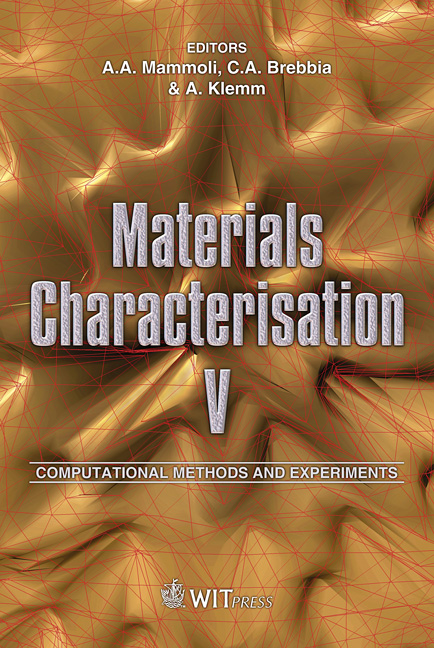Evaluation Of The Fretting Corrosion Mechanisms On The Head-cone Interface Of Hip Prostheses
Price
Free (open access)
Transaction
Volume
72
Pages
8
Page Range
77 - 84
Published
2011
Size
1,892 kb
Paper DOI
10.2495/MC110071
Copyright
WIT Press
Author(s)
I. Caminha, C. R. M. Roesler, H. Keide, C. Barbosa, I. Abud & J. L. Nascimento
Abstract
Fretting-corrosion is one of the main concerns in the application of hip prosthesis. This type of information is very important in the stage of orthopedic implants design, with the purpose of minimizing the amount of tissue exposed to corrosion products which are released during the permanence of the prosthesis in the patient. The residual corrosion products of stainless steels are associated to the occurrence of several adverse reactions in the human body. The knowledge about these corrosion products is extremely important in the phase of the project of hip prostheses, aiming at the minimization of the amount of exposure of the organic tissues to corrosion products released during the permanence of the prosthesis inside the patient. In the present work the mechanical stability and fretting corrosion resistance of modular hip prosthesis, which was fabricated with ASTM F 138 austenitic stainless steel, were evaluated according to the criteria of ASTM F 1875 standard, method I, which prescribes long term test, with the purpose of determining the amount of damage through the quantification of the corrosion products and debris which resulted from the fretting corrosion conditions. The mechanical tests were performed in a servohydraulic mechanical testing machine and the modular interfaces were exposed to an electrolytic 0.9% NaCl in distilled water solution and subjected to a minimum load of 230 N and a maximum load
Keywords
fretting corrosion, hip prosthesis, modular components, mechanical properties





